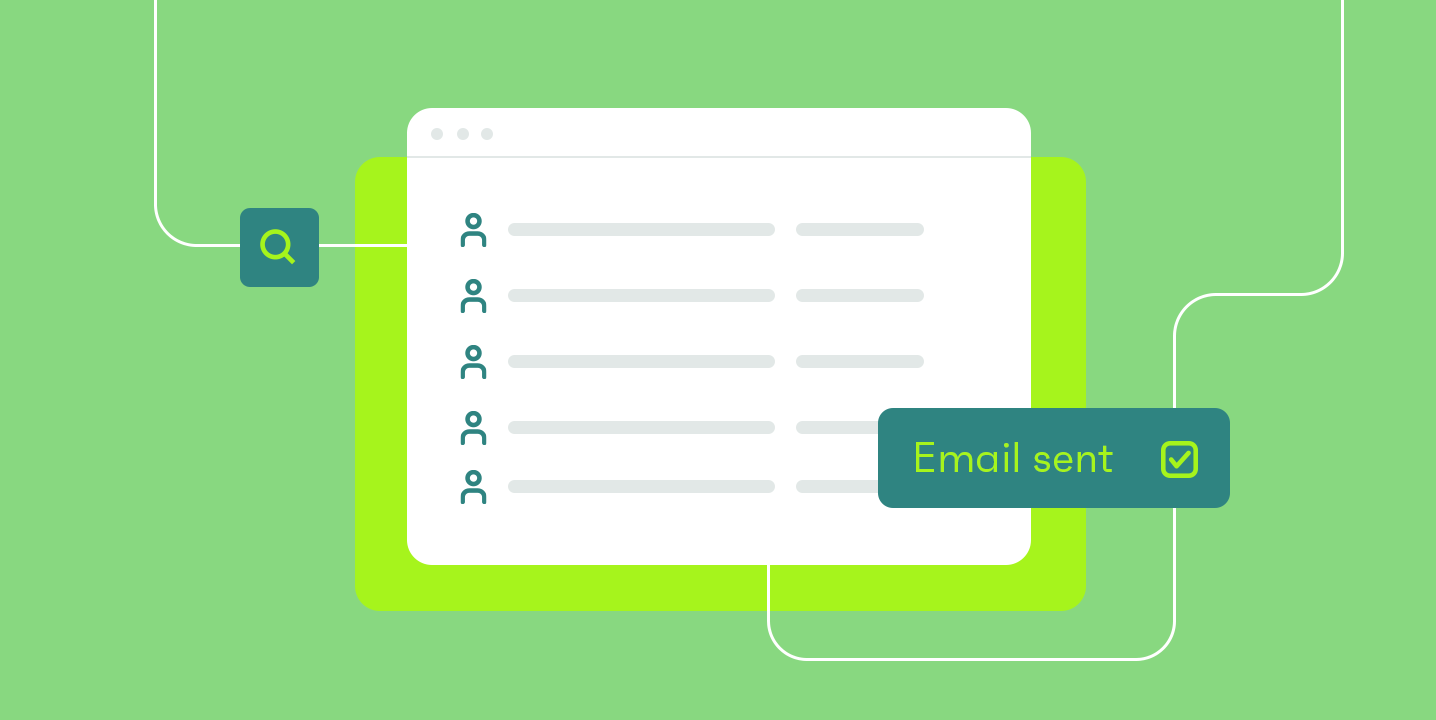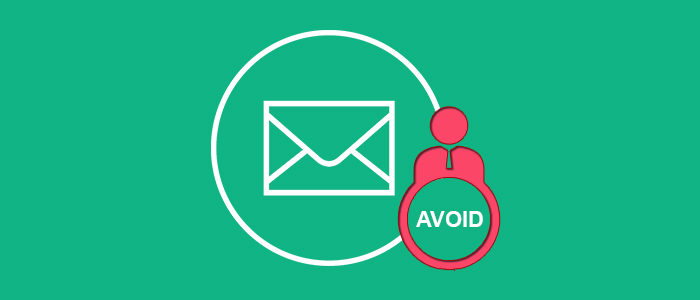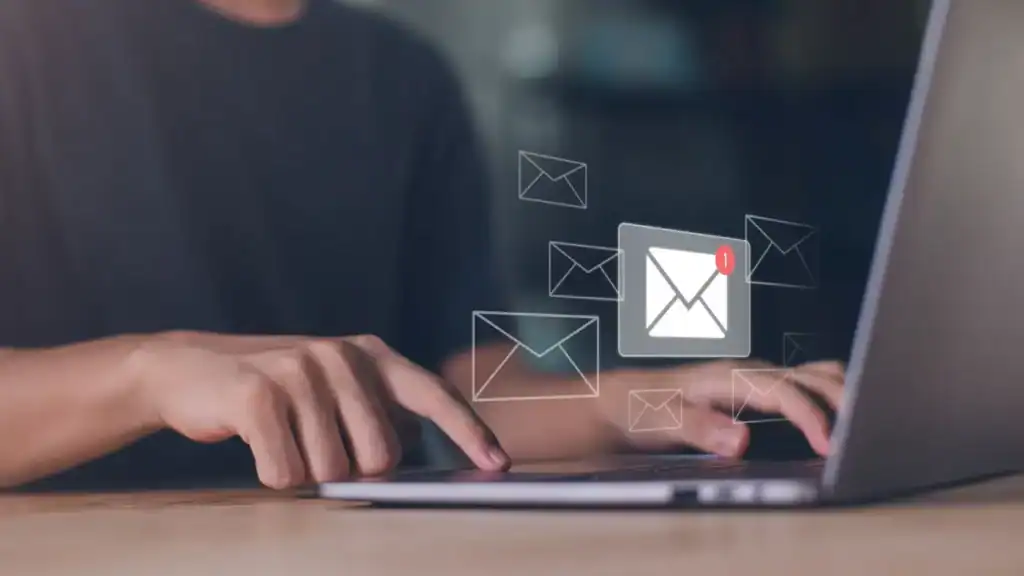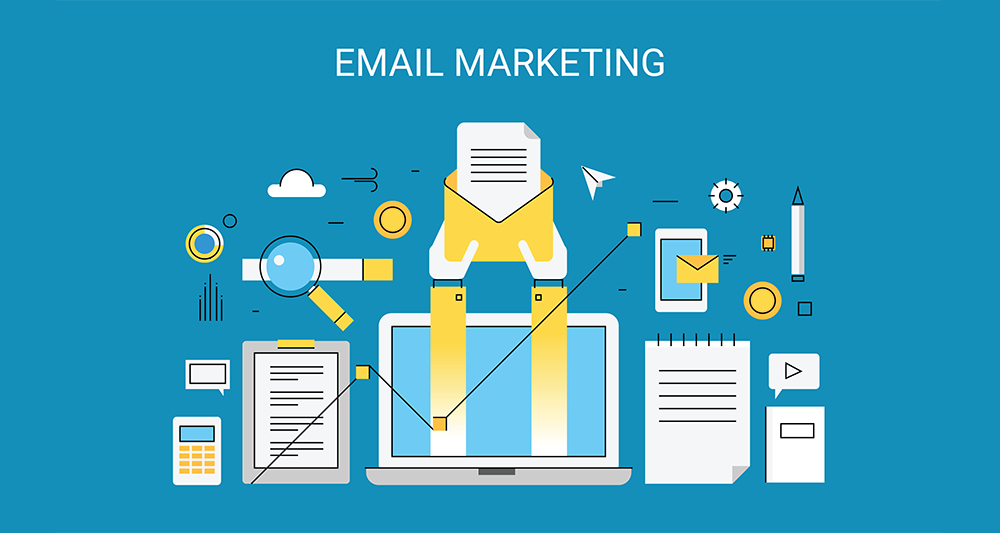Have you ever drifted off to sleep in a lecture or presentation, only to jolt awake once someone addresses you personally?
A similar thing happens with email marketing. Customers may ignore your emails simply because they feel like you’re speaking to a crowd.
But what if you started speaking to each person directly?
This is at the heart of conversational email marketing, which transforms your messages from monologues to conversations. In this article, we’ll talk about how to make engaging conversational emails quickly and effectively.
Try Selzy for free
Send emails in minutes with Selzy!
Sign up for free and try our intuitive platform that makes email marketing so easy, anyone can master it.
What is conversational email?
Conversational email is all about building a real relationship with your customer. Instead of broadcasting messages, you speak directly to them. It is part of a broader approach called conversational marketing, which prioritizes dialogues and individual connections with customers.
At its core, conversational email is a style. This means that your emails can be about anything — a new product launch, a promotional offer, a customer support check-in — but the way they are structured is almost like you’re talking to a friend or coworker. The tone is friendly, the language is accessible, and the goal is to start a conversation.
Let’s see what makes conversational emails different from more traditional or formal emails through examples from real brands.
Traditional emails often look like announcements made to or at an audience. This email from Anthropic is a good example — it announces the information to a broad audience:
Source: Milled
Using conversational email style, on the other hand, is about making your messages feel like they’re from a real person, not just a company promotion. They’re often shorter, to the point, and sound like everyday speech.
For example, when you sign up for Selzy, you get a personalized message offering a quick welcome chat:
Source: Author’s inbox
Beyond tone, conversational emails also leverage personalization to make messages relevant to the recipient. Think back to how you email your friends: you start with their name and make sure the email is considerate of their life circumstances and your relationship history.
Similarly, you want to make sure your customer feels seen and understood. This goes beyond just the first name and includes details such as their industry, past purchases, and much more.
The power of conversational emails
Let’s first look at the current email marketing environment as a whole and then zero in on why conversational emails might be a good solution.
Many of us today have marketing fatigue. With too many things demanding our attention, it can be easy to tune out any additional information. This is why emails often end up in the archive or, worse, the spam folder.
For marketers and business owners, this means your offers, tips, and newsletters might not be reaching the people who need them most. According to recent data:
- The average email open rate across industries is around 43%.
- The average click-through rate (CTR) — people actually clicking on a link in your email — is a much lower 5%.
- And when we look at actual conversions from email marketing (like a sale or sign-up), the average sits at about 0.07%.
These numbers show that it’s not enough just to send more emails. The emails we send need to connect with our customers and address their needs.
Luckily, you have a secret weapon at your disposal: conversational emails that cut through the noise and create more engaging customer experiences. This is a great way to improve the click-through and conversion rates.
Let’s look at what exactly makes conversational emails so powerful.
Building trust and engagement
When you send a more personalized, conversational email, you’re tending to your potential customers’ needs with tailored and timely communication. This builds trust, which is the foundation of any strong relationship. Building a connection ultimately turns general contacts into active leads.
Enhancing open and response rates
Another benefit is that conversational lines pique curiosity far better than generic ones. Consider this B2B cold email from Jumio as an example:
Source: Good Sales Emails
The email opens with security questions that all of us are painfully familiar with. This grabs attention, and the concise, engaging style makes it easy to absorb the rest of the text quickly. It also ends with a direct call-to-action: “Are you free tomorrow?” Overall, it’s a good example of how to write a pitch email that works.
An email like this is far more likely to get opened and, importantly, replied to. This is exactly what will help you beat baseline open rates and gather helpful insights on the kinds of replies you receive.
Boosting conversations and sales
Actively talking with your customers allows you to tailor your offers and solutions much more effectively. This can help you understand common pain points and learn exactly what a lead needs to hear to make a purchase.
Improving customer support and satisfaction
Source: Author’s inbox
Regularly checking in with customers, asking their thoughts, or offering help in a kind and friendly tone can significantly improve their experiences. An email that reflects their current struggles and offers proactive help makes each person feel valued. This personable approach also leads to higher satisfaction and retention.
How to use AI and automation in your conversational emails
Now that you know why conversational emails are a great tactic, let’s discuss how you can make and use them. In theory, you can create conversational emails manually and speak to each customer one-on-one. But this can be very time-consuming and requires too many resources.
This is exactly where automation and AI shine! Choosing the best email marketing service with robust AI capabilities can help you save time and brainpower.
In Selzy, you can use straightforward email automation and more complex omnichannel automation. The latter uses an API trigger to pull data from your CRM, e-commerce, and other apps and helps to enhance your email outreach with all the important customer data, like past purchases, browsing behavior, etc.
By using Selzy’s omnichannel automation, you can create intricate scenarios that imitate how a natural conversation would flow. Plus, you get access to an email builder with a built-in AI assistant. With Selzy’s AI assistant, you can craft compelling conversational emails without spending all day writing. This assistant can draft copy, help you analyze existing content, and even generate entire emails, including images and buttons.
Let’s consider three common scenarios where Selzy’s omnichannel automation and AI assistant can help you.
To access the omnichannel automation, choose the Scenarios tab on your Selzy dashboard. Once you’ve created a scenario and added the necessary emails, add email bodies. In the email editor, choose the AI tab to access the AI assistant. We’ll be using its Copywriter role.
When you click on the role, the assistant will give you guidance on formulating proper prompts.

Scenario 1: Conversational B2B outreach
B2B emails can really benefit from being more conversational — after all, you’re trying to get a relationship going!
Here’s how Selzy’s AI Copywriter helped transform a standard business partnership pitch into a conversational email that actually sounds human.
For this prompt, we gave Selzy the following context for an eco-friendly product company:
Company: Sells reusable pads and tote bags with an eco-friendly focus
Target audience: Potential retail partners (business owners)
Goal: Introduce products and offer partnership while providing value through sustainability tips
Rather than jumping straight into writing, Selzy first mapped out a strategic framework:
Subject line: Partner with Us: Eco-Friendly Products & Sustainable Solutions
Structure: Introduction → Product benefits → Value-add tips → Partnership invitation → Clear CTA
This planning phase shows how the Selzy AI thinks through email strategy before diving into copy.
When asked for a shorter, more conversational version, here’s what Selzy delivered:
Source: Selzy
Notice how Selzy opted out of a standard B2B pitch and created something that feels like a friendly business conversation. The email maintains professionalism while feeling approachable — exactly what you want when trying to build business relationships.
Scenario 2: Win-back emails
Another common challenge is re-engaging customers who haven’t purchased in a while. To make this strategy work, use integrations and Selzy’s API trigger to supplement your email campaign with data from your customer relationship management platform.
For this prompt, we asked Selzy to write a win-back email from a fictional coffee company, “Mrs. Bean,” to a past customer who hasn’t made purchases in the last six months.
The dialogue with the AI followed the same steps as in the last example, and this was the result:
Source: Selzy
Scenario 3: Newsletters
Newsletters are crucial for keeping up with your customers and providing relevant information. Sending them regularly can help promote new products and build loyalty over time.
We prompted Selzy to create an email for a goat milk skincare brand’s newsletter, focusing on a timely summer theme.
Source: Selzy
Use Selzy and send personal and effective emails
Selzy is an intuitive email and marketing automation software, equipped with everything you need to send great emails, no matter their type.
How to make engaging conversational emails
Beyond using automation and AI, conversational emails entail some preparation to be truly effective and enhance your email marketing strategy.
The goal is to first earn the attention of your audience, then understand their needs through dialogue, and finally, recommend the most relevant solutions. Here’s how to do this step by step.
Understand your audience
Effective conversational emails start with understanding your audience beyond basic demographics like age and gender. You’re connecting with individuals who have real lives and reasons for whether or not they care about your messages.
To build this understanding, focus on psychographics as well as demographics:
- What are their main pain points and aspirations?
- What communication style resonates with them?
- What stage of the customer journey are they in?
- What challenges do they face related to your product or industry?
You can find these insights by actually talking to your customers through surveys, digging into your email and website analytics, or simply asking your sales and support teams what questions come up most often. The more you understand your audience, the more you can make each email feel like it was written just for them.
Keep it simple and clear
In addition to the marketing fatigue we discussed earlier, information overload is another important factor. It makes it hard for your customers to make decisions and can even lead to burnout.
That is why your emails should be easy to read and digest. Aim for concise language — like in this example from MonkeyLearn:
Source: Good Sales Emails
Notice how they skip unnecessary introductions and get straight to the point using everyday language and simple questions.
To achieve this conversational tone:
- Use contractions like “you’re,” “it’s,” and “we’ll” as you would in normal conversation.
- Write in active voice rather than passive (“We designed this feature” vs “This feature was designed”).
- Keep sentences concise and paragraphs short.
- Avoid industry jargon and corporate speak.
- Read your email aloud to check if it sounds natural.
The test is simple: if you wouldn’t say it in a conversation with a coworker, don’t write it in your email.
Personalize the email
Effective personalization goes beyond inserting someone’s first name. Use the customer data you have to make messages feel individually relevant.
To achieve this, reference past interactions, mention specific content they’ve consumed, or acknowledge their specific industry or company news if relevant:
Source: Good Sales Emails
If these personalization strategies don’t work in your situation, there are more to consider:
- Think about their customer journey stage. New subscribers should get different messaging than long-term customers.
- Use their engagement history. Tailor email content based on what they’ve previously opened or clicked. Here, you may draw data from your CRM or e-commerce integrations.
Use a friendly tone
Write like you speak — or like a more polished, helpful version of how you speak. You don’t want to sound like a robot or an out-of-touch corporate team.
- Show empathy. Acknowledge your customers’ potential challenges or feelings (“I know getting started with [new tool/concept] can sometimes feel overwhelming…”).
- Inject your company’s unique personality. Are you witty, supportive, or inspiring? Let that shine through consistently while maintaining warmth.
- Relax the formal grammar. The premise of conversational emails is to sound like a real person — and real people make mistakes. This doesn’t mean breaking all rules, but swapping a semicolon for a comma or using occasional sentence fragments will help you sound more approachable.
- Co-create with AI. If you use an AI-powered tool to write your emails, be sure to check its output and tweak the tone if necessary. This helps your tone remain friendly without becoming overly familiar or rigid.
Recess, a mocktail brand, is one of the best examples of brands using conversational tone. They use traditional marketing emails with bright visuals and trendy designs, as well as ones that almost look like plain text. Notice how they break the text into one-sentence paragraphs and don’t use any capitalization. Coupled with the “friend” greeting, this helps create an approachable and warm campaign.
Source: Milled
Engage the reader
Remember, the “conversational” part means you’re aiming for a two-way exchange, not a monologue. To encourage responses, especially to your newsletter:
- Ask open-ended questions that prompt thoughtful answers rather than yes/no responses.
- Use alternative calls-to-action, such as “Hit reply and let me know your thoughts,” alongside traditional buttons.
- Share relatable experiences that invite customers to share their own.
- End with genuine invitations for feedback or questions that don’t sound rhetorical.
Don’t forget that if you invite replies, you should be prepared to actually respond. Nothing undermines trust faster than emails that feel personal but lead to radio silence once someone engages.
Use proper formatting and organization
Most emails are viewed on phones, often by people with limited time and attention. Good formatting makes your conversational tone more accessible:
- Use short paragraphs and generous white space.
- Include bullet points or numbered lists for easy scanning.
- Bold key phrases and calls-to-action sparingly but effectively.
- Add simple subheadings for longer emails.
- Ensure buttons and links are easily tappable on mobile screens.
Your main message should be clear within the first few lines, and someone should understand your key point even if they only read the opening and closing.
Take a look at our guide for mobile email marketing to learn more.
Be relevant
Relevance is key to maintaining engagement. The most perfectly written conversational email will fall flat if it arrives at the wrong time or addresses irrelevant concerns.
Consider these factors:
- Behavioral triggers. Send emails based on specific actions customers have taken.
- Seasonal relevance. Align your messaging with current events, seasons, or industry cycles.
- Lifecycle stage. New customers need different messaging than long-term customers.
- Current events. Be aware of what’s happening in your customers’ industries or regions.
Edit and proofread
While a conversational tone is more casual, it doesn’t mean careless.
- Stick to your style guide. This helps your tone be consistent and helps avoid any potentially problematic words or phrases.
- Use a grammar and spell-checking tool. This is your first line of defence against typos and errors.
- Have a colleague review your text for clarity and tone. A fresh pair of eyes is helpful for catching sneaky mistakes or inconsistencies.
- Check all links. Formatting issues, such as broken links, lower your credibility and make you look unprofessional.
Final thoughts
With everyone’s inboxes overflowing, the emails that get attention are the ones that show care for the recipient’s time and attention.
The good news is that you don’t need to make these conversational emails from scratch. Focus on the truly strategic and creative parts of the work and let our AI assistant handle the rest.




